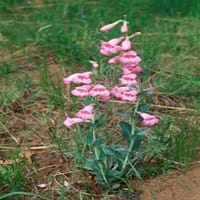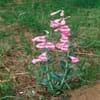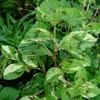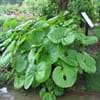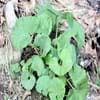Life Span
Perennial
Perennial
Type
Flowering Plants
Fruit
Origin
North-Central United States, Central United States, Western United States, Texas
Eastern Asia
Types
Blue Toadflax, Old-Field Toadflax
Actinidia arguta, Actinidia giraldii, Actinidia hypoleuca
Number of Varieties
Not Available
Habitat
Cultivated Beds
Dappled Shade, open Woodlands
USDA Hardiness Zone
3-9
3-8
Sunset Zone
1a, 1b, 2a, 2b, 3a, 3b, 10
1a, 1b, 2a, 2b, 3a, 3b, 4, 5, 6, 7, 8, 9, 14, 15, 16, 17, 18, 19, 20
Habit
Upright/Erect
Vining/Climbing
Flower Color
Pink, Light Blue, Lavender
White, Ivory
Flower Color Modifier
Bicolor
Bicolor
Fruit Color
Not Available
Green, Yellow green
Leaf Color in Spring
Light Green, Blue Green, Gray Green
Green, Dark Green
Leaf Color in Summer
Blue Green, Gray Green
Dark Green
Leaf Color in Fall
Blue Green, Gray Green
Dark Green
Leaf Color in Winter
Not Available
Light Green
Leaf Shape
Oval to egg shaped
Oval
Plant Season
Spring, Summer
Spring, Summer, Fall
Sunlight
Full Sun, Partial Sun
Full Sun, Partial Sun
Type of Soil
Clay, Loam
Loam
The pH of Soil
Neutral, Alkaline
Neutral
Soil Drainage
Well drained
Well drained
Bloom Time
Late Spring, Early Summer, Summer
Spring, Late Spring, Early Summer
Tolerances
Drought
Shade areas
Where to Plant?
Ground
Ground, Pot
How to Plant?
Cuttings, Divison, Seedlings
Grafting, Stem Cutting
Plant Maintenance
Medium
Low
Watering Requirements
Average Water Needs, Do Not over Water
Average Water Needs, Requires regular watering
In Summer
Lots of watering
Regular watering required
In Spring
Moderate
Moderate
In Winter
Average Water
Average Water
Soil pH
Neutral, Alkaline
Neutral
Soil Type
Clay, Loam
Loam
Soil Drainage Capacity
Well drained
Well drained
Sun Exposure
Full Sun, Partial Sun
Full Sun, Partial Sun
Pruning
Remove damaged leaves, Remove dead branches, Remove dead leaves
Remove damaged leaves, Remove dead branches, Remove dead leaves
Fertilizers
use all-purpose fertilizers
Apply 10-10-10 amount, fertilize twice a year
Pests and Diseases
Foliar disease, Root rot, Spider mites
Botrytis head rot, Japanese Beetles, Leaf Rollers, Nematodes, Phytophthora, Root rot, Sclerotinia blight, Spider mites, Thripes
Plant Tolerance
Drought
Shade areas
Flower Petal Number
Single
Single
Foliage Texture
Medium
Medium
Foliage Sheen
Matte
Glossy
Allergy
Depression, High blood cholestrol, Pain
Not Available
Aesthetic Uses
Showy Purposes
Cottage Garden
Beauty Benefits
Not Available
Not Available
Environmental Uses
Air purification
Shadow Tree
Medicinal Uses
Analgesic, Febrifuge, Stomachic
Antioxidants, Fiber, Folate, Rich in Potassium, Vitamin C
Part of Plant Used
Leaves, Root
Fruits
Other Uses
Not Available
Grown for shade
Used As Indoor Plant
No
No
Used As Outdoor Plant
Yes
Yes
Garden Design
Rock Garden / Wall, Wildflower
Edible, Feature Plant, Vine
Botanical Name
PENSTEMON grandiflorus
ACTINIDIA arguta
Common Name
Large Beardtongue, Shell-leaf Penstemon, Wild Snapdragon
Hardy Kiwi
In Hindi
Wild Snapdragon
हार्डी कीवी
In German
Wilde Snapdragon
Hardy Kiwi
In French
Snapdragon sauvage
kiwai
In Spanish
Salvaje Snapdragon
kiwi hardy
In Greek
άγρια Snapdragon
σκληραγωγημένα ακτινίδια
In Portuguese
Selvagem Snapdragon
kiwi Hardy
In Polish
Dziki Snapdragon
hardy kiwi
In Latin
Phlox Ferae
Hardy kiwi
Phylum
Magnoliophyta
Magnoliophyta
Class
Magnoliopsida
Magnoliopsida
Order
Scrophulariales
Theales
Family
Scrophulariaceae
Actinidiaceae
Genus
Penstemon
Actinidia
Clade
Angiosperms, Asterids, Eudicots
Angiosperms, Asterids, Eudicots
Tribe
Not Available
Not Available
Subfamily
Scrophularioideae
Actinidiaceae
Number of Species
Not Available
Not Available
Season and Care of Wild Snapdragon and Hardy Kiwi
Season and care of Wild Snapdragon and Hardy Kiwi is important to know. While considering everything about Wild Snapdragon and Hardy Kiwi Care, growing season is an essential factor. Wild Snapdragon season is Spring and Summer and Hardy Kiwi season is Spring and Summer. The type of soil for Wild Snapdragon is Clay, Loam and for Hardy Kiwi is Loam while the PH of soil for Wild Snapdragon is Neutral, Alkaline and for Hardy Kiwi is Neutral.
Wild Snapdragon and Hardy Kiwi Physical Information
Wild Snapdragon and Hardy Kiwi physical information is very important for comparison. Wild Snapdragon height is 61.00 cm and width 25.40 cm whereas Hardy Kiwi height is 550.00 cm and width 90.00 cm. The color specification of Wild Snapdragon and Hardy Kiwi are as follows:
Wild Snapdragon flower color: Pink, Light Blue and Lavender
Wild Snapdragon leaf color: Light Green, Blue Green and Gray Green
Hardy Kiwi flower color: White and Ivory
- Hardy Kiwi leaf color: Green and Dark Green
Care of Wild Snapdragon and Hardy Kiwi
Care of Wild Snapdragon and Hardy Kiwi include pruning, fertilizers, watering etc. Wild Snapdragon pruning is done Remove damaged leaves, Remove dead branches and Remove dead leaves and Hardy Kiwi pruning is done Remove damaged leaves, Remove dead branches and Remove dead leaves. In summer Wild Snapdragon needs Lots of watering and in winter, it needs Average Water. Whereas, in summer Hardy Kiwi needs Regular watering required and in winter, it needs Average Water.
